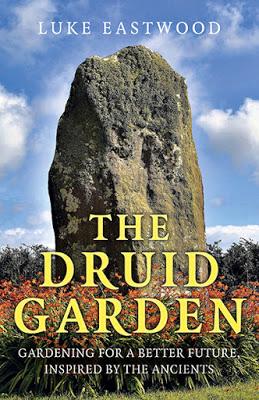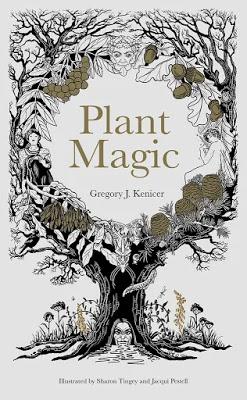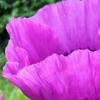I love books that teach me knew things especially from a perspective I might not be familiar with. There is always something new to learn about gardening and these two books taught me alot. I have not paid for these books and my words and opinions are as ever my own.

This might be one of the most comprehensive gardening books I have ever read. Luke has written a masterly book on everything you might possibly need to know inspired by his extensive knowledge of druidry. Even if you have no interest in druid culture at all this book is still a fantastic gardening book and the themes within it are relevant and important. This is a book about connecting with nature to create a better garden and environment for ourselves. Luke sets out to teach us where to begin 'from the soil up' and does so with great success. Luke covers the history of gardening, about how soil is formed and its importance. We move on into planning a garden and what to plant and how we can use those plants. The section on connecting with our plants had particular resonance with me as I think we all know that being connected to nature matters particularly for our mental wellbeing. I also have to say that I have long wanted to create a labyrinth in my garden (I have no space to do so but I keep thinking about it) and this book tells me how to do so.
Luke says "It is time for a book like this. We humans desperately need to stop, slow down, and reflect on how we can be partners with the natural world." (p. 3) I can only agree wholeheartedly with this.
I loved reading this book, I learned a lot and it made me think.
The Druid Garden by Luke Eastwood is published by John Hunt Publishing

I wanted to review this book as when I saw it I thought it sounded interesting. It is published by the Royal Botanic Garden Edinburgh so I expected it to be well researched and indeed it is. Gregory tells us about magic, uses of plants in magic, gods and alchemy and more in the introduction. We then get into the meat of the book which is a directory of plants and how they were referred to in history/myth/folklore and a scientific explanation of why if there is one. It is a fascinating book. I now know that Ragwort is known to be a 'witches steed' and 'faery horse'. This may seem odd as it is toxic to horses but apparently it was used as a treatment for horses back in the day.
The section on mystery plants is very interesting too. These are plants that are referred to in historical documents/accounts and yet cannot be clearly identified. The Laughter Leaf referred to by Pliny is one such example (with an interesting suggestion of what it might be.....)
Similarly the appendix on Devilish Plants, plants that have common names that link them to the devil, is interesting and fun to read.
The illustrations by Sharon Tingey and Jacqui Pestell really add to the joy of this book, though there are not enough of them, I would have liked to have seen more.
This is a wonderful book, full of interesting knowledge. I really enjoyed reading it.

